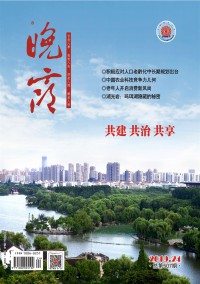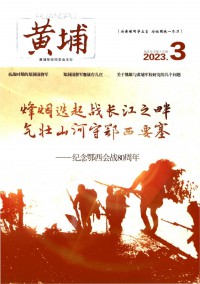老人与海海明威
前言:想要写出一篇令人眼前一亮的文章吗?我们特意为您整理了5篇老人与海海明威范文,相信会为您的写作带来帮助,发现更多的写作思路和灵感。
老人与海海明威范文第1篇
【关键词】:老人与海;命运;骄傲;勇气;成功
厄内斯特 海明威是一位著名的美国作家,多年来他的小说《老人与海》一直是一个流行的话题。许多研究人员做了大量关于小说人物的研究,我想从几个层面分析海明威对人的定义中最具价值的精神力量,而这种精神力量正是他对人的定义:一个人并不是生来要给打败的,你尽要以把他消灭掉,可就是打不败他。用海明威一个常用的比拟,他就象一座冰山,更大的重量在水面以下。海明威通过描述圣地亚哥的眼睛来揭示他真正的力量:“除了他的眼睛,他的一切都是老的、旧的,而他的眼神是和海一样的颜色,是愉快的、不可战胜的。”
一、 骄傲
当然,圣地亚哥84天的坏运气对他作为一名熟练能干的渔夫的骄傲是一种侮辱。表面上看,圣地亚哥的骄傲迫使他冒险去深海,“超出世界上所有的人”去捕马林鱼。他试图航入远海来展示他的技能的尝试导致了不幸。海明威并没有因为他的主人公充满了骄傲而谴责他。相反,圣地亚哥成了骄傲驱使人取得伟大成就的范例。因为老人承认他杀死那条强大的马林鱼绝大是出于骄傲:“他并不是为了谋生为了卖了鱼买食物才杀了它,他想,你是因为骄傲才杀了它。”并且,因为他捕到了马林鱼转而导致了他被打败的英雄超越。骄傲成了圣地亚哥伟大力量的源泉,没有强烈的骄傲感,人与鱼之间的斗争就不会有,或者更可能的是,在已有的结果之前早就放弃了。
圣地亚哥的骄傲也激发了他超越自然破坏力的欲望。整本小说,不论环境变得多么悲惨,老人都展示出一种抓住马林鱼并把它带回岸上的不懈决心。当第一只鲨鱼来的时候,圣地亚哥的决心在几段里提到了两次。一开始作者说这位老人“充满了决心但是几乎没有希望。”然后,几个句子后,作者说:“他充满了决心但毫无希望地攻击。”这位老人带着同样不动摇的决心面对每一个挑战:为了把那条马林鱼带回岸上他愿意付出生命的代价,为了打败那些鲨鱼他愿意去死。正是这种去做,去斗争,永不放弃的决心使圣地亚哥能避免失败,尽管他返回哈瓦纳时没有带回战利品,但是他返回时,他已经骄傲地和果断地原谅了自己。海明威似乎想要表明成功不是荣誉的前提条件。取而代之,荣誉取决于一个人是否有勇气坚持斗争到底,即使老人带着完整的马林鱼回来了,他的荣誉时刻,象马林鱼的肉一样,也是短暂的,圣地亚哥获得的荣誉不是来源于斗争本身,而是来源于斗争的勇气和决心。
二、 高贵
已经在几个场合下告诉曼诺林,他是一个奇怪的老人。在这奇怪是高贵的同义词,是一种普通人表面上看来缺少的东西。他现在必须证明它“千百次他已经证明它不算什么,现在他正又一次证明它,每次都是新的并且他证明的时候从未想过过去。”这是圣地亚哥特定心理的一种表达,事实上,他从不考虑过去,每一种新情况出现的时候他总是需要证明自己,他认为高贵是用行动做出来的而不是说出来的。
把那只绕圈的鱼拉上岸累得圣地亚哥筋疲力尽。这位恼怒的老渔夫大喊“你要杀死我啊,鱼,但你有权力这样做,兄弟,我从未见过一条比你更大、更美、更镇定、更高贵的鱼。来杀了我啊,我不在意是谁杀了谁。”和从前一样,这条马林鱼是圣地亚哥的一个高贵的范例。有趣的是圣地亚哥似乎不在意谁杀死谁。这就像圣地亚哥和鱼的关系一样,似乎唤起了以死在一个高贵的对手手中和打败他同样为荣的一种高贵的行为方式。这在圣地亚哥遇到的第一条鲨鱼的描述中鲜明的表现出来“他是一条鲨鱼,生来就是海里游得最快的鱼,除了他的下颌他的一切都很美,他的背和剑鱼的一样蓝,他的腹部是银色的,他的皮肤是光滑漂亮的。”事实上“除了他的大下巴他就是一条剑鱼。”这鲨鱼不是一种污秽或残酷的动物,而是有它自己独特的高贵方式,一条掠夺性的马可鱼。
三、 英雄主义
挺过能打倒人的苦难取得胜利是英雄主义的中心。为了让圣地亚哥成为全人类英雄的象征,他的苦难也必须是巨大的。海明威对英雄主义的幻想需要持续不断的努力以获得瞬息的完美的结局。英雄做的就是有尊严、有风度地面对苦难,因此海明威强调自我控制。
我们外在的成败对英雄主义来说并不像使我们自己举指与内在的高贵一致那样重要,像圣地亚哥说的“一个人并不是生来要给打败的,你尽可以把他消灭掉,可就是打不败他。”我们可以从书中对海龟的描述看到这一点,圣地亚哥说“大多数人对海龟都是冷酷的,因为海龟在被割开、杀死后它的心脏会跳几个小时。但老人想,我也有这样一颗心脏,我的脚和手也像是它们的一样。”这一定义是重要的因为它巩固了我们对圣地来哥不屈不挠的理解。海明威在小说中提出的打不败的品质:他的身体毁灭了,他的心,他的精神将会继续斗争。这预兆出了圣地亚哥将要面对马林鱼的艰巨任务。并且,海明威告诉我们圣地亚哥吃海龟蛋来补充体力,喝鲨鱼肝油来保持健康。这样,他内化了海的特质并且把它们转化为自身的一部分。
通过圣地亚哥和曼诺林的对话证明了圣地亚哥在这部小说的结束也是未被打败并且保持着他的尊严。他对那个男孩说的第一句话是“他们打败了我,他们真的打败了我。”在这些句子中,他们指那些鲨鱼。然而,他很快转向了世俗的事情,如怎么处理马林鱼的头,他不在的时候曼诺林捕到了什么鱼。当圣地亚哥由于运气不好,拒绝和曼诺林捕鱼时,男孩说他能带来好运气。很快,圣地亚哥谈论如何做一个新矛为下一次出海做准备。最后,在小说最后一句“老人又梦到了狮子。”这是他出海前力量和青春的象征。确实符合海明威英雄主义的公式,圣地亚哥,经历了所有这些磨难,仍像从前一样保持着未成功也未被打败的灵魂。
四、 成功
海明威区别了两种不同的成功:外部的,物质成功;内部的,精神成功。我们可以从圣地亚哥的衣服、他的船和他的房子看出来,圣地亚哥缺少前一种成功。而由于他拥有后一种成功,缺少前一种成功的重要性就被拥有后者给掩饰了。圣地亚哥的故事可以描述成不屈不挠的精神战胜匮乏的物质资源的成功,在圣地亚哥一点一点失去他的艰辛所得——极其宝贵的马林鱼之后,他仍以从未被打败的状态结束了这部小说,是因为遵从了内部成功高于外部成功的原则。
海明威巧妙地说出“除了他的眼睛,他的一切都是旧的,它们和海同一颜色,他们是愉快的,是打不败的。”这让人们注意到将上面提到的两种成功一分为二。在引用的这个句子中,我们可以把“一切”当作是他贫困的生活条件;而“他的眼睛”则显示了他的精神胜利。尽管他缺少物质成功,但他打不败的精神战胜贫瘠的物质条件是小说另一个重要的主题。
五、 宗教
在一本人与命运抗争的小说里圣地亚哥对罪的讨论是非常有意义的。他疑惑他杀死马林鱼是不是罪。“我想它是罪尽管我这么做是为了生存和给许多人提供食物,那么什么都是罪。”圣地亚哥试图通过回忆起“他生来就是个渔民就象鱼生来就是鱼。”来缓解这种疑惑。根据这种推理圣地亚哥注定要犯罪,也许,要为犯罪受惩罚,受苦。这也许表达了海明威的观点——人生就是具有不断遭受苦难的特征,不是因为一些可避免的犯罪,而是因为人生就是这样。
老人与海海明威范文第2篇
读《老人与海》,便觉得体内有一股冲动,有一种被长期束缚之后获得自由的,老渔夫圣地亚哥的硬汉子形象在人的心中留下了不可磨灭的印象。下面是小编为大家整理的关于阅读海明威老人与海读后感,希望对你有所帮助!
阅读海明威老人与海读后感1人生就是一场无止境的追求,无论成败与否,都是一个起点。成功与失败往往只是一念之差,失败并不可怕,可怕的是你没有面对失败的勇气。《老人与海》中的主人公圣地亚哥用他的实际行动向我们证明-即使失败,也要成为一名英雄!
《老人与海》讲述了一位老渔夫圣地亚哥在连续八十四天没有捕到鱼的情况下,与大马林鱼机智地周旋、搏斗,正在归程中却一再遭到鲨鱼的袭击,最后回港时只剩下了鱼头和鱼尾以及一段骨骸。
“然而人不是为失败而生的,一个人可以被毁灭,但不能给打败。”在老人与大马林鱼的搏斗中,大马林鱼无疑成为了牺牲者,鲨鱼来到后,老人和大马林鱼一样,同样成为了牺牲者。老人与鲨鱼间的搏斗,正是老人的意志和一切强大的敌对力量抗争,而鲨鱼则化身成为了敌对力量的代表。虽然鱼肉都被咬去了,但什么也无法摧残老人的意志。老人圣地亚哥虽然是一位失败者,但是他敢于同恶势力抗争的精神,使他成为了英雄。所有东西都注定会毁灭,只有你的行动才是永存的。只有这样,你才会成为一个真正的成功者!
在生活中,挫折是必不可少的磨难。我们也许会因为难题而退缩,我们也许会因为落后的成绩而气馁,我们也许会因为考试而烦恼这些小小的挫折不值一提,却往往成为人生路上的绊脚石。有些人会像老人圣地亚哥一样追越极限,在困境中迎难而上,即使失败了,也问心无愧。
因为你做出了行动,你就是一个成功者!有些人却没有信心和勇气去直面失败和挫折,而是得过且过,最终被命运从成功的行列中抹除,成为一个无所事事的人。鲨鱼或许是最后的胜利者,但毋庸质疑的是,老人也是一位胜利者,他始终知道这伟大的“杰作”是属于他的。他没有向大海向大马林鱼,更没有向鲨鱼投降和妥协。我们也需要具备这种敢于同命运抗争的勇气。在任何时候,都把失败看成一种磨练,让它成为我们垫脚的基石,来攀登更高的山峰,挑战自我,直面缺陷,超越极限,你就是自己生命中最重要的英雄!
在人生的旅途中,哪会少得了失败?失败乃成功之母,人总会摔倒,只是看你能否重新爬起。是否还能勇敢地去面对,成功总在风雨后,只有经历了失败,才会体验那成功的来之不易。只要你用一颗顽强的心去对待,成功就在不远处向你招手。
阅读海明威老人与海读后感2合上书已经很久了,《老人与海》中曲折连环的故事情节与老人圣地亚哥明知对方力量比自己强,还是要决心战斗到底的精神已经深刻地记在我的心里。
古巴人圣地亚哥在八十四天里没有捕到任何鱼,以致于别的渔夫把他看做失败者。但他不肯认输,在第八十五天仍然下决心驾船驶向远方去钓大鱼。他独自出海,终于钓上了一条大马林鱼,在海上与这条大鱼搏斗了三天,终于将它杀死。但在返回途中却遭到鲨鱼的袭击,最后回港时只剩下鱼头鱼尾和一条脊骨。作者用这个故事表达了:“一个人不是生来要给打败的,你尽可以消灭他,可就是打不败他。”的主题。
我觉得这本书写得最精彩的地方,是老人圣地亚哥与鲨鱼搏斗的情节。
鲨鱼闻到血腥味,纷纷前来袭击大马林鱼,老人圣地亚哥用尽一切手段对鲨鱼进行反击。鱼叉被鲨鱼带走了,他把小刀绑在桨把上乱扎;刀子折断了,他就用短棍打;短棍也丢掉了,他就用舵把来打。即使鱼肉都被咬去,也无法阻拦老人的斗志、老人的英勇意志,多么令人佩服啊!
明知力量敌不过大马林鱼,却死死地抓住它不放;面对鲨鱼的攻击,能用各种工具进行反击。老人这种不怕困难、顽强拼搏、永不服输的精神,是我们这一代人最需要学习的。现代的我们都是生活在温室里的花朵,是家里的“小皇帝”、“小公主”,父母含在嘴里怕化了,捧在手里怕掉了。一个个都是衣来伸手、饭来张口,总是沉浸在父母的溺爱之中,遇到一点难题就退却;遇到一点挫折就气馁,这样怎么练就报效祖国的本领呢?生活中,挫折是必不可少的磨难。挫折并不可怕,可怕的是你没有面对挫折的勇气。成功总在风雨后,只有经历了挫折,才能体验那成功的来之不易。只要你用一颗顽强的心去对待,成功就在不远处向你招手。
《老人与海》中的主人公圣地亚哥用他的实际行动告诉我们:一个人可以被毁灭,但不能给打败。在未来的人生道路上,我们一定要做到顽强拼搏,永不放弃。
《老人与海》这本书使我受益匪浅,老人的精神让我们永生难忘。为了美好的明天,我推荐这本书,大家一起读,希望它成为青少年的励志好帮手。
阅读海明威老人与海读后感3第一次读《老人与海》,便觉得体内有一股冲动,有一种被长期束缚之后获得自由的,老渔夫圣地亚哥的硬汉子形象在我的心中留下了不可磨灭的印象。
他连续出海84天,都没有捕到鱼,后来,他终于捕到了一条大马林鱼。在返航的途中,他一路与鲨鱼搏斗,结果大马林鱼还是被鲨鱼群吃掉了,最后,只剩下一副鱼骨架——足有18英尺长。
《老人与海》不是一般意义上的情节小说,它更像是一部寓言小说。作者借助于老人圣地亚哥的故事,表现的是在生与死的搏斗中的硬汉子精神。作者用富于象征的笔法,将这个硬汉子送到大自然中,让他在海上与大马林鱼和凶恶的鲨鱼群进行惊心动魄的搏斗,通过此,表现了主人公“在重压下的优美风度”。
打不垮是硬汉圣地亚哥的突出特点,也是小说的主题之一。譬如说,他在与大马林鱼相持的一天半的时间里,他的左手一直抽筋,像蜷曲的鹰爪,右手被绳子勒得出了血。他把手浸在海水里,说:“不坏,痛苦对一个男子汉来说不算什么。”与大马林鱼搏斗到最后关头时,他头晕目眩,仍自言自语:“你吗,你是永远不会垮的。”正如作品所说,人可以被消灭,但不能被打败。真正的硬汉,是敢于向命运、向自然、向失败挑战的人。他可能在拼搏中一次次地失败,但他的精神是永远不会垮的,这就是人的尊严所在。人只有在这种拼搏中超越自我,才能实现自身的价值。
读完小说,让我们回到现实中来。常听人说,现在的学生很累。不错,升学的压力,社会的压力,甚至还有来自家庭的压力,这些压力把学生压得喘不过气来。于是,有人逃避了,有人退缩了,这些人不是硬汉;有人在失败后痛哭流涕,甚至自寻短见,这些人也不是硬汉:有些人侥幸成功了,便沾沾自喜,目空一切,这些人更不是硬汉。真正的硬汉子是跌倒了爬起来,爬起来后,更想跳起来的人。
在小说的结尾,作者故意安排了一个情节:老渔夫的孤独与失败被一个孩子所理解,老人留给孩子的是打不败的精神。这个结尾似乎有点凄凉,不过,小说带给我的那股冲动是抹不去的。“做一个硬汉!”我对自己说。
阅读海明威老人与海读后感4整个故事叙述的就是关于一个遭遇命运捉弄的古巴老渔民—圣地亚哥的故事,故事中还有关爱他的一个男孩。
老渔民年轻过,爱过、出众过、幸运过,岁月带走了主人公饱满健硕的肌肤,却无法带走他英武的体格,带不走他内心的高贵,更带不走他的勇猛顽强。镇上小男孩对他的深情和关爱,这人间宝贵的真情是老渔夫挑战生命极限生存下来的精神支柱。
交上背运的老渔民在近海一直无法捕到鱼,于是他根据自己的经验和判断,决定勇敢地独自一人去更远的海域捕鱼。历经了常人无法容忍的千难万险,老渔民不断地挑战自己身心的极限,终于捕获了一条巨大的“登多索鲨”—他有生以来见过的一条。
他这么喜爱这条鱼,觉得他们之间有那么多的相像。“它是靠吃活鱼维持生命。它不是食腐动物,也不像有些鲨鱼那样,只知道游来游去满足食欲。它是美丽而崇高的,见什么都不怕。”这些话勾勒出老渔夫所欣赏的为人准则:光明、磊落、英勇和高贵。
正如老渔民所想的:每样东西都杀死别的东西,不过方式不同罢了。捕鱼养活了老渔民,同样也快把他害死了。现在,我们人类大量地开发自然资源,假若我们不带着对自然的爱任意开采,结果会不会也害死我们人类自己呢?
老渔民的所作所为不正代表了人类在自然界的行为吗?他所思所想也不正是我们人类精神经常所至的吗?
虽然,最后人们能看到的只是那登多索鲨鱼的大尾巴直竖在小船船梢的后边,鱼赤露的脊骨像一条白线,还有带着突出的长嘴的黑糊糊的脑袋,而在这头尾之间却一无所有。但是,人们仍能如此真切地感受到这条鱼的伟岸和捕鱼者的力量,令明者震撼!
“一个人可以被毁灭,但不能被打败”老人最后说的这句话富含哲理。就如音乐大师贝多芬所说“我可以被摧毁,但我不能被征服”。这些不能被打败的是勇气,这些不能被征服的是高贵。更令人深省的是:那男孩使得老人活得下来!“爱”是人类生存下去动力!
阅读海明威老人与海读后感5读完《老人与海》,我不禁为这样一个具有如此顽强意念老渔夫所震撼,闭上眼,眼前浮现的是浪黑风高的夜,月光下,一艘绑着硕大马林鱼的小船艰难前行着。与鲨鱼们殊死搏斗过后体力透支的老渔夫桑提亚哥紧紧地盯着海面,警惕随时可能出现的危险……
作者海明威为我们塑造了一位勇气十足、不屈不挠、热爱生活、勇于面对不惧怕失败、渴望胜利的老渔夫形象。他坚强的意志与不屈的灵魂吸引了我。这位古巴老渔夫在接连几十天没有捕到鱼的情况下出海远行经过不懈努力,几天几夜的周旋最终制服了一天异常巨大的大马林鱼。他把鱼绑在船边,却因此引来一批又一批的鲨鱼陆续赶到。
老渔夫当然没有因此而吓倒,毅然与这些冷血的侵略者战斗。在几次鲨鱼的进攻之后,大马林鱼的肉已经被吃掉了一大半。更可悲的是,当他回到海港时,大马林鱼基本只剩下一副骨架了。最终老人还是一无所有。是什么支撑着老渔夫几天几夜与大马林鱼周旋;是什么支撑着老渔夫用鱼叉,后来竟用船奖、木棒甚至船舵把迎接鲨鱼的一次次进攻?是老人坚强的意念、不屈的灵魂。
在经历了一次次磨难后还是毫不动摇的坚持:例如与大马林鱼周旋了几天几夜,身体疲乏,后来发现上钩的竟是一条身躯大过鱼船数倍的大家伙时他也知道要取胜希望渺茫却还是硬要坚持;例如大马林鱼泡在海水中,血腥味引来了鲨鱼,老人没有放弃自己的猎物,用各种“武器”与之战斗;又例如大马林鱼的肉最终还是被吃光了,但他还是把鱼骨架带回了渔港……老人上岸后每走几步就要好好休息一段时间,可见他此行吃尽了苦头,能这样的坚持下来真是不可思议。
我惊叹老渔夫虽然年纪已经大了,身上也有伤,但面对鲨鱼这样如此凶悍的对手,没有退缩还坚持战斗直到把他们打败。为了生活,为了目标凭借坚定的信念在这片他赖以生存的蔚蓝的大海上写下部不朽诗篇。老人对“美好”的追求也是显而易见的,对生活:他虽然一无所有,还是尽力生存,在连续几十天捕不到鱼的情况下毅然出海,在最终未能有所获的情况下也没有一蹶不振。
老人与海海明威范文第3篇
[关键词]海明威;自然史;达尔文;自然选择;性选择;《老人与海》
[中图分类号]I712.065 [文献标识码]A [文章编号]1674-6848(2013)03-0117-12
迈克尔·雷诺兹(Michael Reynolds) 在完成其权威5卷本《海明威传》之后不久,在总结海明威的生平和事业时,称他为“自然研究者”,并说:
(这位“自然研究者”)把我们带入非洲。非洲那颗黑色心脏有力地跳动在他的作品中,尽管并非一直都很明显。海明威研究多个国家溪流中的鳟鱼,墨西哥暖流中的枪鱼,西班牙的斗牛,非洲的猎物。他研究鸟类的飞翔、河流的湾道和国家的走向。但是他首先、最后、一直研究的是一种奇怪的直立行走动物——他的同类, 自然环境中的人。①
海明威于1923年开始发表作品,在1926年出版的《太阳照样升起》(The Sun Also Rises)中嘲讽威廉·詹宁斯·布赖恩(William Jennings Bryan)在“斯科普斯审判案”(Scopes Trial)中的反达尔文进化论的言论,这类事实将有助于了解海明威的自然观和环境观。之前的美国作家一直在达尔文的《人类的起源》(1871)的启迪下探索人类的性质,这种探索持续了五十多年。在这五十多年中,这些美国作家(有些是明确的达尔文学说反对论者)以各自不同的方式,从不同的社会角度阐释达尔文进化论。②但是,正如斯科特·菲茨杰拉德(F. Scott Fitzgerald)在《人间天堂》(This Side of Paradise,1920)中所说的,很多人仍然“惊骇得发抖,当他们发现达尔文先生到底说的是什么的时候”。③
海明威完全接受达尔文对人类在生物共同体中的地位的定义:在起源上,人类与其他生物一脉相承,共同生活在生命之网中,受制于自然选择和性选择的法则。海明威的典型手法是把人物抛掷在其生存的自然历史环境中,让他们去面对自然环境中的自然选择和性选择的威力,并让他们在这种环境中独自领悟、界定自己的人性。他塑造的这种典型人物是失去了一切的“奇怪动物……人”,他们信仰爱以及更高层次的法则。但是,像《老人与海》(The Old Man and the Sea)(1950)中的圣迪亚哥(Santiago),海明威作品中这些最具魅力的人物都能坦然接受自己在“虚无的”、“无意义的”(海明威常用的形容词)宇宙中的生存状态,接受生命的真实面目。他们勇敢地、“真正地活着,不让生命随随便便地流淌”④,他们肯定的不仅仅是生命的美丽和壮观,还有生命中不可避免的暴力。他们以优雅的风度和尊严应对生命的本来面目。
一、海明威的自然观
随着《在密执根北部》(“Up in Michigan”,1923)的发表,海明威开始在写作生涯中探索其他许多小说家业已研究的达尔文学说:性选择是如何损害了爱的意义。在这个大胆的故事[这个故事是格特鲁德·斯泰因(Gertrude Stein)建议他写的,但没能得以出版①]中,一位名为莉斯(Liz)的年轻妇女选择第一个恋人主要是因为她被他的性魅力所吸引。达尔文曾经从性特征如胡子来定义性魅力。但是没有爱情的邂逅与无异,莉斯“痛苦不堪”,觉得“一切都失去了”。②海明威在他的第一部小说《太阳照样升起》中更充分地探索性选择的含义。当时的时代背景是达尔文进化论遭遇到极大的抵抗——这种抵抗不仅存在于“斯科普斯审判案”中,甚至存在于直至20世纪40年代早期才结束的科学界的争论中。当时孟德尔的遗传学和自然选择结合在一起形成“现代综合论”(the Modern Synthesis)。在这样的时代背景中,海明威开始他一贯的对其他作家的超验自然观③的讽刺(例如与达尔文进化论不同的观点)。他最喜欢讽刺的对象是W.H.哈德逊(W. H. Hudson)。海明威通过《太阳照样升起》中的人物罗伯特·科恩(Robert Cohn)来达到讽刺目的,因为罗伯特·科恩相信浪漫主义爱情:“科恩一遍遍地阅读(哈得逊的)《紫色的大地》(‘The Purple Land’)”,一部 “非常危险的书”,该书讲述“一个关于一位完美的英国绅士在极度浪漫的大地上的出色、然而是虚构的爱情冒险故事”。④
海明威小说中还有杰克·巴恩斯(Jake Barnes)这样的经典人物。他是一个即将成为情人的人,却在战争中失去了,更可悲的是他仍然有着望。在性方面放浪无忌、挑选了多个情人的布莱特·阿什利(Brett Ashley)也是海明威小说中的人物典型。这两人对爱情讨论得不少,但意识到“关于爱情,他们已经无能为力”⑤。科恩和布莱特分别代表了男性和女性在性选择法则支配下的典型行为:科恩,一个拳击手,好斗好妒;而布莱特的眼睛最终为斗牛士罗梅洛(Romero)所吸引。同时,海明威认为杰克没能体验到祈祷文中更高层次的爱也是自然历史中的自然现象:杰克祈祷失败后离开教堂,步入广场,在那儿,他意识到:“我右手的食指和大拇指刚才还是湿的(才在教堂中的圣水中浸过),但是现在手指已经干了,圣水在阳光下蒸发了。阳光是热的猛烈的。”⑥《太阳照样升起》中呈现出的自然比此文所能讨论的多得多(例如斗牛及一系列的鳟鱼捕捞等)。海明威穷其一生思考情感孤独和精神孤独的问题,这部小说是他长期思考过程中的一座里程碑,他认为人类必须根据达尔文学说忍耐这样的孤独。⑦
评论家约瑟夫·伍德·克鲁奇(Joseph Wood Krutch)立即攻击海明威的达尔文式自然观,指责其在《太阳照样升起》中的令人不快的冒犯性的自然观,认为该小说对“生物驱动力”的强调都是“动物”性的“非人化”观点的宣扬。克鲁奇在结束这篇著名的评论时声称:“我们应该宁愿作为人死去,而不是作为动物活着。”①海明威用《死亡的本质》(“The Natural History of the Dead”)②回击,这是一个极具讽刺意味的关于战争中的死亡的故事,因为死亡领域“一直被自然学家所忽略”。③海明威在自己的亲身经历中观察到“人像动物般死去”,极端血腥的细节就像“一幅戈雅的画”。④尽管他从来没有观察到“自称为人道主义者”的“高尚的”退场,但他还是下结论说:“大多数人的死亡和动物没有区别,都像动物一样死去,而不是像人。”⑤海明威对克鲁奇的折辱是很明显的,但是他也提到了浪漫主义自然学家,比如W. H.哈德逊(W. H. Hudson)、吉尔伯特·怀特牧师(Reverend Gilbert White)、斯坦利主教(Bishop Stanley)和曼戈·帕克(Mungo Park)——这些人的作品认为自然学的特有功能是加强“我们跋涉在人生的荒野中所需要”的“信仰、爱和希望”。⑥
同样,在《非洲的青山》(Green Hills of Africa,1935, 根据他1933年在非洲游猎的经历所写)中,海明威通过批评其他自然学家来为自己的自然学研究方法辩护, 这次批评的是梭罗 (Thoreau)和其他未知姓名的作家对“艺术”、“经济学”或“经济学的—宗教”⑦的热衷和投入。他所说的“经济学的—宗教”意义宽泛,包括梭罗(他的“经济篇”这一章为《瓦尔登湖》中的超验自然观打下了基础)和20世纪30年代的社会主义作家,这些作家相信互助理论而不是竞争和自然选择。在《非洲的青山》的最后几页,海明威的向导总结说:“我们有非常原始的感情”,“没有竞争是不可能的”, 即使竞争会“毁了一切”;⑧海明威最后向宗教发起了攻击。在非洲结束游猎回家的途中,他发现自己来到“加利利海边”⑨,看到海里有“很多在水中游动,形成圈圈水痕”,于是疑惑为什么“从来没在《圣经》中被提到。我认为那些人不是自然学家”。⑩
关于海明威的自然观,《非洲的青山》提供了很多可供探讨的内容。在研究海明威20年后在《老人与海》中探索自然的方法之前,有两点特别值得先在这里提一提。第一,在他对湾流的高度赞美中,海明威伤心地表明他的自然观,至少在某一方面,已经过时了。他曾经写到:“海洋是最后留给人类探索的地方之一。”{11}海明威把打猎和捕鱼作为一个“严肃的职业”和写作的重要主题,为了辩护自己这么做的正当性,他比较了作家在“充分并真实地描述事物”时的感受和“独自”呆在墨西哥暖流中的感受(墨西哥的水流将会永远流淌下去,人类的力量是无法阻挡的)。尽管哈瓦那的垃圾每天都被倒入大海,但大海还是保持如常的“蓝色和波澜不惊”,海明威在描写这一现象时总结道:“代表胜利的棕榈叶,代表发明的旧灯泡,以及代表爱的空,毫无意义地在永恒的海流中飘荡。”①[确实,如果海明威能活着看到1989年的埃克森瓦尔迪兹(Exxon Valdez)石油泄漏和2010年的英国石油泄漏,如果海明威能活着看到世界各大洋都被大量的塑料垃圾所堵塞,那么他一定不会再认为洋流是可以永远流淌下去的。]第二,在《非洲的青山》中,海明威对于他所称为“一个乡村”的思索包括对土壤遭受侵蚀的观察,这在很大程度上类似于奥尔多·利奥波德(Aldo Leopold)后来在其生态专著《沙乡年鉴》(A Sand Country Almanac,1949)中对类似生态现象的较为成熟充分的阐述。海明威写到:“一旦我们到来,大陆就迅速老化了。当地人和谐地与所生存的大陆共存,但是,外来者破坏了这种和谐,他们把树砍倒、把水排干,造成自然供水系统的改变。在极短的时间内,曾经埋在地下的土壤,纷纷在地面,接着,土壤开始流失。这样的土壤流失在每个古老的区域都发生过。”②显然,这种生态问题震撼了海明威,但是在海明威那个时代,他不可能像利奥波德那样是为了呼吁人类保护土壤而指出这样的生态问题,他只是为了说明他为什么在非洲寻找未遭人类入侵的原始村落。我在此提及《非洲的青山》这两个段落,不是为了批评海明威作为环境保护者的局限性,而是帮助读者把焦点聚拢在他的《老人与海》中的主题:圣迪亚哥,独自一人,努力理解并接受自己作为一位渔夫在自然中的位置。
《老人与海》是海明威的达尔文式自然观的一个例子,为了理解这一点,我们必须注意到这样一个事实:海明威在小说中没有提及圣迪亚哥是如何处理生活中对生殖的需求,只有在这个前提下讨论《老人与海》才有意义。圣迪亚哥必须首先解决位于生物驱动力首位的需求:杀和吃。在海明威的生涯中,弗洛伊德同样声称驱动世界运转的只有两大力量——“饥饿和爱”③;如弗洛伊德一样,海明威的职业生涯的大部分时间都在其作品中强调性的本质,例如他的遗作《伊甸园》(The Garden of Eden,1986)。尽管他的大部分作品都包括这两大生物驱动力,但却没有在《大双心河》(“Big Two-Hearted River”,1925)中提及性问题,故事中的人物尼克(Nick)“觉得他已经丢弃了一切需求:思考的需求、写作的需求及其他需求”,④这个人物反映了海明威当时的大部分个人经历(他近期的战争经历和爱情,正如很多评论家所猜测的那样)。尼克发现自己身处一个“被烧毁的国家”⑤,尽管独自一人,但他最终适应了新的生存环境并安定下来。是一场森林大火烧毁了这块土地,这块土地反映了海明威对T.S.艾略特(T. S. Eliot)在《荒原》(1922)中的现代生活意象的回应。然而尼克和艾略特诗中的人物不同,他将自然世界理解为“美好的地方”①,从而找到自己的方向。当尼克走向露营地,他“根据太阳保持方向”,最终躺在地上“仰望天空”,认识到“后背所枕着的土地感觉起来真好”。②在观察鳟鱼的时候,尼克明白必须处理自己破碎的生活:他“观察鳟鱼努力在水流中稳住”,“观察它们在水流中掌控自己”,直到“一只翠鸟逆水而飞”把它们惊散,接着这些鱼又稳定下来面对“逆流”。③
尼克进一步感觉到生存是和适应力及自然选择一致的。他注意到所有的蚱蜢都是黑色的,“意识到蚱蜢变黑是因为生活在烧焦的土地上”。④同样地,尼克看到这里的鳟鱼脊背是“带斑点的,像水中的干净沙粒的颜色”(揭示了它们对付翠鸟的适应性防卫),他意识到“生活在沼泽的动物有应对沼泽的方式”,所以才在那种环境中幸存下来。⑤在这个故事的第一部分,尼克看到鳟鱼跳起来捕捉昆虫,“在溪流中以此为生不愁挨饿”,随后尼克建起自己的露营地。海明威写到:“现在他饿了……尼克饿了……他非常饿了。”⑥然后,吃了第一口食物后,尼克说:“基督……耶稣基督。”⑦第二天早晨,(故事第二部分的开始)尼克太兴奋“太匆忙以至于来不及吃早饭,但是他知道他必须吃”。⑧随后,在尼克体验捉住生平第一条鱼的兴奋之前,海明威迫使他先面临作为渔夫必须经历的可怕暴力。尼克是一个用鱼饵打鱼的渔夫(像海明威所创造的所有渔夫那样),他接受了必须杀生以维持生命的血腥现实,以及在其中自己所要扮演的角色。他抓住一只“蚱蜢的头固定住它,同时把细长的鱼钩从它的下颌穿过,贯通它的胸部刺入下腹。这只蚂蚱用前脚抓住鱼钩,把褐色唾液吐在上面。”⑨
《大双心河》发表之后那年,海明威开始写尼克·亚当斯(Nick Adams)的另一个故事《现在我躺下》(“Now I Lay Me”,1927)。故事中尼克发现,他的关于吃和钓鱼的想法削弱了他的祈祷能力。在这个故事里,尼克从战争的创伤中渐渐康复,回忆起父母的不幸婚姻,备受折磨。但是海明威暗示,贯穿整个故事的蚕每晚吃食的声音,一直萦绕在尼克的耳畔。正是这种体现了人类生存的最基本功能的吃食声音,让尼克回忆起战争和令人痛苦的无爱的婚姻。尼克清醒地躺着,“听着蚕吃桑叶”——“你可以听到它们吃食的声音以及排泄物在桑叶堆中掉落的声音”。⑩尼克不敢入睡,担心睡着后他的“灵魂会逃离他的躯体”,那是他在战争中受伤时所短暂地经历过的事情。{11}有时,在等待天亮时,为了避免睡着,他想着很多事:钓鳟鱼、寻找不同的鱼饵,下决心不再用火蜥蜴或蟋蟀做饵,“因为它们在鱼钩上的挣扎”{12}让人受不了。但是在晚上,当他“无法钓鱼”时,他就回忆起父母的婚姻并“为他们祈祷”。{13}在某些晚上,尼克“甚至忘记了(他的)祈祷”,“完全无法记得”“在尘世犹如在天堂”这句之后的祈祷词。{1}这是海明威著名的“冰山”写作技巧的极佳例子,海明威让读者去领会隐没在水下的部分,即尼克所不能面对的来自上帝的祈祷文中的话语:“请给我们今天的面包。”{2}相反地,尼克说:“你可以在晚上非常清楚地听到蚕吃食的声音,我睁大眼睛躺着,听着。”{3}随着故事的发展,尼克的朋友注意到他烦恼不安,就建议他“结婚”,因为那时候他“不愿意结婚”。{4}但是尼克无法避免听“蚕吃食”和排泄的声音,海明威留给尼克痛苦的反讽,即他朋友对婚姻的肯定——婚姻“会修复一切”。{5}
二、“以海为生,杀死我们真正的兄弟,足够了”
回到《老人与海》中的饥饿与吃的主题,海明威给我们塑造了另一个渔夫形象——圣迪亚哥。他已经上了年纪,不再有达尔文理论中所说的“性的挣扎”,但是他仍然无法摆脱孤独和吃这一基本需求。独自一人,以海为生,圣迪亚哥将遭受杀和吃的本能需求的折磨,然后逐渐接受自己在充满暴力的世界中的位置。至于圣迪亚哥的苦恼以及他应对这种苦恼的行为,海明威将会把他塑造为一个现代圣人。圣迪亚哥以圣·詹姆斯(Saint James)命名,而圣·詹姆斯这位渔夫是基督选中的第一个门徒,可能因为这个原因,他认为“我天生是当渔夫的料”。{6}但是海明威的圣迪亚哥坚持说:“我是不信宗教的。”{7}海明威不会暗示读者圣迪亚哥甚至听说过达尔文,但是圣迪亚哥从自己的漫长人生中了解了海洋生命,更重要的是,他完全接受达尔文最令人不易接受的深刻见解:所有的生命,包括人类,起源于共同的祖先。{8}圣迪亚哥“并没有对海龟怀着神秘主义的信仰”,他知道:“我有着(像海龟一样)的心脏……我的手脚和它们的相像。”{9}他把鼠海豚当成是“我们的兄弟,就如飞鱼是我们的兄弟一样”。{10}他意识到咬了鱼钩的马林鱼是他的“兄弟”。{11}他认为,“人类与伟大的鸟类和兽类相比算不了什么”,他“宁愿是海洋黑暗深处的兽类”。{12}最终,在与捆绑在船侧的马林鱼一起前行时,他想:“我们像兄弟般一起航行。”①
海明威在故事的开始就发展老人的内心冲突,那时那个男孩一再鼓励老人吃。圣迪亚哥一开始假装他有充足的食物,告诉这个男孩他“不非常饿”。②当男孩告诉他:“你可不能光打鱼不吃东西。”圣迪亚哥回答:“我这么干过。”我们很快明白圣迪亚哥抗拒吃,不是因为他没钱买食物,而是因为“长久以来吃让他感到厌烦”——厌烦到当他出海打鱼时“从不带午餐”。③然而,在打鱼的水域,圣迪亚哥知道他需要吃并且在此后几页中不停地告诉自己:“我一定得记得,为了保持强有力,必须在这条金枪鱼腐坏之前吃了它”;“我一定得记得吃了这条金枪鱼”;“我必须吃这条金枪鱼,这样我才不会失去力气”;“现在……我必须吃这条小金枪鱼”;然后,宰杀了这条小金枪鱼之后,他对自己说:“现在,吃了它……现在吃了它。”④尽管圣迪亚哥这时变得有怜悯心,“慢慢地认真地”咀嚼着一片鱼肉,海明威却没有变得同样富有怜悯心。
海明威一次次显示圣迪亚哥如何努力地吃,特别是吃令他恶心的鲯鳅或剑鱼,甚至在圣迪亚哥“吃了一半鲯鳅肉”后,海明威描写了一幅古怪的情景:上了钩的马林鱼不断挣扎,而抓着鱼线的老人“被拉倒在船头,脸埋在切成片的鲯鳅肉里,不能动弹”。⑤圣迪亚哥试图洗掉“脸上的鲯鳅肉”,后来再一次意识到“他应该多嚼一些鲯鳅肉”,但他担心再吃鲯鳅肉会吐出来,因为他的脸曾“埋在鲯鳅肉里”,于是他决定“吃其他的飞鱼”。⑥在对杀戮和进食问题的长久思索过程中,圣迪亚哥杀掉他的大马林鱼,观察一条灰鲭鲨用“卡嗒作响、强劲有力、吞噬一切的上下颌”攻击已经死掉的大马林鱼,然后他“坚决地、恶狠狠地”把鱼叉扎进这条鲨鱼。⑦他提醒自己,这条灰鲭鲨“像你一样吃鱼为生”,“再说……任何生命都在以某种方式杀掉其他生命”。⑧然后,他探身船侧取一片马林鱼的肉,“嚼着鱼肉,觉得肉质上佳、味道鲜美”。接着他开始准备对付即将到来的“非常恶劣的时刻”。⑨其他鲨鱼来了,尽管他成功地杀死了其中的几条,剩下的鲨鱼却把马林鱼撕扯得干干净净,只给圣迪亚哥留下尾巴和“大鱼那已成垃圾的长长的脊骨”。⑩
留给读者思考的是:海明威为什么在结束这场杀戮和进食的戏剧时不停地暗示圣迪亚哥的苦恼可以和十字架上的基督相比。当最后一批鲨鱼开始进攻时,圣迪亚哥仅仅说“唉(Ay)”一个“无法解释”的单词,但它是“一个男人在感觉到钉子穿过双手定进木头时可能会不由自主地发出的喊声”。{11}上了岸,圣迪亚哥“把桅杆扛在肩上”,爬上山回到自己的小屋,倒头就睡,“双臂伸得笔直,掌心向上”。{12}我上文提到圣迪亚哥是某种程度上的现代社会的圣人。海明威一直为自然史的某些事实所困扰,那也是其他作家在《物种起源》发表前几年关注的事实。这些作家觉得他们的信仰不仅仅受到新出现的地质记载的挑战,还受到如丁尼生(Alfred Tennyson)所形容的残酷的大自然的挑战:“自然,血腥的尖牙利爪。”麦尔维尔(Herman Melville)和梭罗也提出过类似的大自然意象。麦尔维尔提到生命是“令人震惊的、鲨鱼般凶恶的”;梭罗回想起自己“抓住并生吞(一只美洲旱獭)”的冲动,意识到自己“像第一个捕鱼人一样,是由于需要的缘故才打鱼的”。①但是,达尔文之前的作品已经把人类放置于拥有共同起源的共同体内,这些作家都找到了相应的方法超越生命的暴力性质,护卫自己的信仰。例如,梭罗宣称:“只有确保自己体内兽性一天天灭绝、神性一天天建立的人才能得到保佑。”②
到了海明威写《现在我躺下》的时候,很多作家已经对达尔文理论引起的革命性变革作出了反应,并试图以自己的方式接受(某些人是拒绝)T.H.赫胥黎《人类在自然中的位置》(Man’s Place in Nature,1863)中的后达尔文主义观点。他们绝大多数被性选择理论及其对爱情意义造成的威胁所困扰。很多作家注意到,人类具有犬牙,但是他们没有哪一个曾经像海明威那样无情地探索过人类在自然这个血腥的竞技场的位置。蚕不停吃食的声音使尼克不能入睡,(和战争经历一起)破坏了他的祈祷能力,而祈祷对圣迪亚哥来说却是相当容易的事儿——圣迪亚哥祷告不是为了“保住我的灵魂”,相反地,他是“不信宗教的”,他只是“机械地”或“无意识地”祈祷他能“捉住这条鱼”。③在夜的黑暗中,他看见、但是“不知道参宿七的名字”(猎户星座中最亮的一颗星星),而当他接受他“必须杀死”他的马林鱼时,他问自己:“它够多少人吃?”谁又配吃“这条有着不凡举止风度和高度尊严的鱼?”④在这个场景中,圣迪亚哥承认不“理解这些事”。他想:“以海为生,杀死我们真正的兄弟,足够了。”⑤我认为,这是海明威在《老人与海》中的自然观的要点:想像一下,有一个男人,他以自己的尊严接受了生命的血腥一面并积极参与其中。
海明威并没有认为圣迪亚哥这样的人会从“在海上谋生只要活着就够了”的想法中获得彻底的安慰,但是他暗示读者,圣迪亚哥的三段充满孤独和磨难的经历特别有助于引导他接受自己在生命中的位置。首先,在打鱼生涯中,一个生命吃掉另一个生命的原始景象指引了他。圣迪亚哥看到“飞鱼跃出水面”,观察到一只鸟
在追踪这条飞鱼。老人看到水面轻微的凸起,那是大鲯鳅群在追逐逃窜的飞鱼。鲯鳅们正穿越飞鱼下面的水域,并将呆在水中,乘着飞鱼落下的当儿,全速追赶。这是一大群鲯鳅,他想。它们散得很开,飞鱼几乎没有机会。那只鸟也没有机会。飞鱼对它来说个头太大,速度太快。⑥
在打猎生活中,“机会”这一元素突出了海明威对人类精神孤独的感受,同时也突出了圣迪亚哥的感受:他在生活中不是单独一人的。在后来的场景中,一只鸣鸟找到了通向他的小船的路,然后停在那儿歇息。圣迪亚哥想要同伴,看见这只鸟儿飞得很累了,就和它说话,问它多大了,这是否是它第一次出门。他想到了:
鹰……来到大海追捕它们。但是他没对这只鸟儿说这事儿,反正这只鸟儿也听不懂他的话,反正它能很快了解鹰的意图。
“好好休息,小鸟”,他说。“然后进来碰碰运气,就像其他任何人、鸟或鱼那样。”①
鸟儿飞走后,圣迪亚哥环顾四周寻找,因为“他已经喜欢有它为伴”。②
海明威在描写了圣迪亚哥观察鲯鳅追逐飞鱼的场景后,立即引入第二个系列场景,在这些场景中,圣迪亚哥了解了自己的状态。在第一个例子中,圣迪亚哥向“黑暗的水中”看去,看到“太阳弄出的奇怪光亮”③(海明威重复“奇怪的光”这个词语)。圣迪亚哥自言自语:“现在只有一件事该想一想。我生来注定要做的事。”④随后,海明威立即描绘了第二个关于海中光的场景。圣迪亚哥向船外看去,注意到:“海水颜色很深,光亮在水中形成许多棱柱。无数浮游生物因为高悬的太阳而消失不见,现在老人所看到的是蓝色的水中巨大的深深的光棱。”⑤由于时代的局限,海明威不可能明确地表达出生命起源于海洋这样的后达尔文主义观点,所以传统的阳光或天光,在水中发生折射后,在他看起来似乎是“奇怪的”。然后海明威描写圣迪亚哥“慢慢地认真地……吃完金枪鱼的楔形条纹肉”。⑥之后,海明威描写了第三个海水中光的场景。这次,圣迪亚哥“眼光掠过海面,知道他当时是多么孤单”:⑦
但是他可以看到漆黑的深水处的光棱柱,眼前伸展的渔线和无风水面的奇怪波动。
云层因为信风在聚集,他向前头看去,只见一群野鸭在水面上飞,衬着天空像一幅蚀刻版画,时而模糊,时而清晰,于是他知道在海上从来没有人会是孤单的。⑧
片刻之后,海明威引出了第三个系列景象。此系列的开端是圣迪亚哥看到“海洋表面凸了起来”,然后大马林鱼“不停地露出水面,水从鱼身两侧翻涌”。⑨看到这条“了不起”的鱼,他所听说或所见过的最大的鱼,圣迪亚哥机械地祈祷它快快死亡。他决定杀死这条“巨大而美丽”的鱼,尽管“这是不公平的”。为此,他知道,他是“一个古怪的老人”。⑩和这条鱼斗了好几小时后,圣迪亚哥终于靠近了它,掷出鱼叉,然后他看着“这条鱼活跃起来,尽管死到临头,却再次高高跃出水面,显示出巨大的长度和宽度,显示出力量和美丽。它似乎悬停在小船上老人的头顶上方,然后砰地一声落入水中,溅起的水花洒了老人一身。”{11}
为了更好地理解圣迪亚哥眼中的“了不起的奇异性”,比较他的马林鱼和麦尔维尔想象中的大白鲸将有帮助。这条拥有“力量和美”的马林鱼是海明威所能想象的最壮丽的生命意象,圣迪亚哥认为这条马林鱼甚至比“要杀死”它的人“更高贵”。海明威写这条死了的马林鱼的“眼睛看起来超然物外……像队列中的圣人般超然”。①可是他知道甚至是这最奇妙的生命形式也只能“在空中一动不动地悬停”片刻。相比之下,麦尔维尔宣称他相信“难以捉摸的生命幻象”,以此护卫他的基督教信仰以抵御来自19世纪中期科学的威胁。尽管麦尔维尔承认人类已经几乎灭绝了野牛,但他坚信“永恒的大白鲸”甚至将会从又一次的“诺亚洪水”中幸存下来,“在峰尖浪头中抬身,向天空喷出挑衅的泡沫”。②
老人与海海明威范文第4篇
美国作家海明威笔下有一位老人,独自在远离海岸的湾流中整整坚持了三天,终于捕回了一条无与伦比的大鱼。如果《老人与海》的故事有中国版,那么汪品先,这位同济大学海洋学院教授、中科院院士,应该是当之无愧的,而他想捕捉“大鱼”的地方,则是中国的南海,他心中的“大鱼”,是与中国未来发展命运休戚相关的深海奥秘、海底资源,是关系到整个地球过去与未来的自然规律。
志在天山,身老沧州
汪品先的大学生活是在莫斯科度过的。
1960年,当他从莫斯科大学古生物专业毕业回国后,在分配工作志愿书的去向栏内只填了一个地点——。“这样写倒不是思想如何进步,而是听了当时列宁格勒一位85岁老教授的话。老教授年轻时在伦敦的博物馆里见过的化石,太漂亮了,他建议我一定要去。”分配的结果汪品先却留在了上海。现在想想再顺当不过了,汪品先是在上海格致中学读的高中,全家人又都生活在这个城市,而且上海的科研门类相对也比较齐全。可当年心揣远大理想的汪品先却不无失落感,他甚至感叹自己是“志在天山,身老沧州”了。
“不过兴奋点还是有的,最后把我分到了华东师范大学,那里新办的地理系要发展海洋地质专业。”这在当年是一个崭新的方向,尽管华师大地理系连一条小舢板也没有。但在汪品先看来,只要有了这一方向和框架,他们就可以向海洋地质迈进了。
对于大学生涯的回忆,今天功成名就的汪品先是多有感激的。前苏联的教育模式尽管谈不上有多少可圈可点,但毕竟莫斯科大学来来往往的名教授甚多,又是在国外求学,这让敢于并善于想“怪问题”的汪品先有了一个相对宽松的环境。“教研室主任奥尔洛夫院士对我们说过,考试得个3分(及格)就可以了,关键要把论好。当年我还幼稚地认为这位院士的话过于歪门邪道!中国古生物学代表团访苏时,斯行健院士告诫我们在国外最重要的是把外语学好。我们问为什么,他说外语好了就可以看原版小说了。我也觉得他的回答太离谱。”汪品先感叹:“这些话的含意之深,我是过了几十年才理解的。”
身为一名科学家,汪品先还写得一手好文章。“学科与学科之间其实都是相通的。”他至今有空还会找本俄文版的小说读读,“科学家的头脑最好是兼收并蓄的。”汪品先如是说。
汪品先在同济大学30多年前的一位学生,后来去了美国当上了教授,还得了一个“总统奖”。这位同济校友在美国的课堂上常常向学生谈起当年自己老师的“实验室”——那是一个蚊蝇多得可以用手抓的废弃车间,墙外就是农村的垃圾堆。老师带领着我们这些年轻人,从这里向海洋“启航”。
在汉语成语里,“同舟共济”是海洋行业里最适用的;而在各种校徽图案中,同济大学的一叶扁舟三支桨,也是海洋学科最好的标志。但是30多年前,同济对海洋并不沾边。
不知道是浩瀚大海气魄的感召,还是“同舟共济”精神的熏陶,同济的这群青年人就这样在困难的条件下埋头苦干,从浅海的表层沉积样品和长江口的岩芯入手,跨出了第一步。一直等到上世纪70年代末期,大庆油田为解释储油层的河成砂岩,需要长江三角洲沉积模式作比较,同济的海洋地质才受到了国内重视;一直等到北京成立了海洋出版社,80年代初印出了同济大学微体古生物研究成果的专著时,同济的海洋地质才赢得国际关注。
20世纪晚期地球科学的突破主要来自海洋,“板块理论”就是一例。“我们自己缺少研究手段,能不能参与国际合作,也去研究深海地质?”这是当时需要同济海洋地质系做出选择的一大命题。1985年国际大洋钻探计划启动,中国科学家们心潮澎湃,赶紧组织委员会,上报领导,要求加入这项规模空前的深海国际组织。同济人也以为这一大命题迎刃而解了。但在当年外汇奇缺的条件下,这只能是一种空想。国际大洋钻探计划是一个“富人俱乐部”,每年要付出数以百万计的美元才能成为成员国。
“尽管如此,我们还是找到了进军深海的途径:发挥自己的长处,用国外样品研究我国的深海问题。我们间接地要到了美国在南海取得的深海沉积样品,从微体化石分析入手,在剑桥大学的合作下,于1986年建立起了南海第一个古海洋学剖面,找到了南海古海洋学的特点,踩上了国际前沿的门槛。”
在南沙升起五星红旗
在汪品先眼中,南海的生命史如同一个鲜活的生命,有血有肉有骨架。南海生命史的“骨架”是岩石的构造,从海底扩张到板块俯冲的地质构造演化;它的“肉”则是泥巴,来自陆地的泥沙、各种海洋生物遗体在深海沉积,并填充进海底盆地,储藏了油气、记录了历史;它的“血”则是充盈其中的流体,从海水到热液、冷泉,包括海底上、下的海洋,也支撑着庞大的暗能量生物圈。
1999年2月18日至4月12日,国际大洋钻探船“决心号”在南海实施了大洋钻探计划(ODP)第184航次,时年63岁的汪品先教授为整个航次的两位首席科学家之一。这是中国海的首次大洋钻探航次,也是第一次由中国人设计和主持的大洋钻探航次。184航次在南海南北6个深水站位钻孔17口,从水深2000米到3300米的海底钻入地层,最深的一口井深入海底以下850米,取得高质量的连续岩芯共计5500米。
“1999年2月12日,当钻探船从澳大利亚西部启航驶向南海时,我在甲板上感慨万千,感到自己终于成为名副其实的海洋地质学家了。”谈起这次航程,汪品先就像在谈昨天发生的事:“总共一万里的航程中,自然界并没有大风大浪,遇到的尽是人间风浪。特别是南沙的钻探‘好事多磨’,先是国际政治问题,后是这块外国海图上叫做‘危险海底’的航道问题,最后又有海盗出没引起的安全问题。船长几次宣布这口井打不成了,而几次都在我国有关部门的支持下,闯过了一个个关口。3月初南沙开钻,美国船长下令升起五星红旗。中国海区第一口深海科学钻井,终于按照我们的设计,在我们的主持下实现了。当第一筒岩芯取上甲板时,许多人拿着照相机拍照,一位英国科学家问我,‘这一筒岩芯,你等了多少年?’”
从那个废弃车间的实验室起步,到实现大洋钻探的深海探索,汪品先个人经历了30多年;而从80年代开始争取的南海深海钻探算起,整个中国地学界也已经等了10多年。
1996年根据中国自然条件的优势,同济大学海洋地质系在汪品先的主导下,提出了在南海深水区通过钻探检验青藏高原隆升造成季风气候的理论假设。这份登记号已经是484的建议书,因为击中了国际学术界的热点,在1997年全球竞争中脱颖而出,名列第一,立即安排在1999年2月至4月实施。汪品先充满信心:中国海洋地质学家多年的努力工作,一定会得到国际同行越来越多的认可。
大洋钻探计划第184航次后,汪品先领导的项目组对5000多米的深海岩芯开展了全面研究。“东亚古季风的海洋记录”就是其中的一项研究成果。该项成果由于它的突破性和创新性,是它赢得欧洲地球科学联合会“米兰科维奇奖”的前奏。
我国的海洋科学紧接着进入了一个快速发展期,相关设备的研发也陆续启动。2002年,7000米载人深潜器“蛟龙号”列入863重大专项;2005年,改造一新的“大洋一号”科考船,开始了全球考察的航行;我国学术界还在推动自主设计制造的大洋钻探船……
但这还不是汪品先的最终目的,他还要更深入地研究南海。
南海面积350万平方公里,最大水深5500多米,既是全球低纬度,也是西太平洋最大的边缘海。与大洋相比,南海就像一只“五脏俱全”的麻雀,“解剖”这只“麻雀”,就可能在崭新的水平上认识海洋变迁及其对海底资源和宏观环境的影响。
然而,目前我们连南海的年龄都还不清楚。现在南海的年龄只是根据30年前美国的船测资料,认为南海形成于距今3200万到1600万年前。1999年南海大洋钻探取得了3300万年来的沉积记录,但是地层记录中最重大构造事件发生在2500万年前后——这是南海“发育”的重要时期,也与矿藏的形成密切相关。搞清楚了这些,中国才能在南海资源的开发与保护中,占据有利位置。
三个愿望
汪品先称自己此生有三个愿望:一是开展深海大洋钻探研究;二是建立国家公用的调查船队;三是建立深海的海洋研究中心。现在第一个愿望已经实现,第二第三个愿望他正在努力之中。
关于海洋,关于我国海洋事业的发展,汪品先天天在想,想了几十年了,且见解独到:以河流流域为基础的华夏文明,是一种农业文明,只求没有异族的入侵,决无向外另求福地的意向,主张人们固定在自己的土地上,并没有到远方开拓的传统。而同样为文明古国的希腊就不一样了,希腊的海洋边就是山,没有多大的土地,只能弄个船到别的地方找出路。汪品先引用复旦大学周振鹤教授的文章,作了个有趣的假设:“如果战国时期统一中国的不是秦国而是齐国的话,恐怕我国今天的海洋文明就会大大地向前推进一步。因为齐国临海而居。”
在汪品先的眼里,中国目前的海洋产业,还是以交通和渔业为主体,而世界上的一些发达国家已经完全不是这个模样了,海底资源正被大规模地开采和利用。如果说10年前,开采的都还是大陆架上的浅水石油,这几来一些大国已经在着手开采深海石油了。海底的开发利用需要有监测的新手段,“美国人还搞了个‘海王星计划’,与加拿大联合在西海岸铺设一个区域性海底观测网,从海底向下打井埋下设备,向上放锚系,再用光纤把所有的观测点连起来。今后海底一有‘风吹草动’,美国的办公室里便可一目了然。”海洋地质学家汪品先估量这一计划的价值:“这是一个革命性的变化,就像在海底设立‘气象站’、‘实验室’。这套技术原来是用来监测苏联核潜艇的,现在转为民用了,将来势必会改变人类和海洋的关系。”
免责声明:以上文章内容均来源于本站老师原创或网友上传,不代表本站观点,与本站立场无关,仅供学习和参考。本站不是任何杂志的官方网站,直投稿件和出版请联系出版社。


